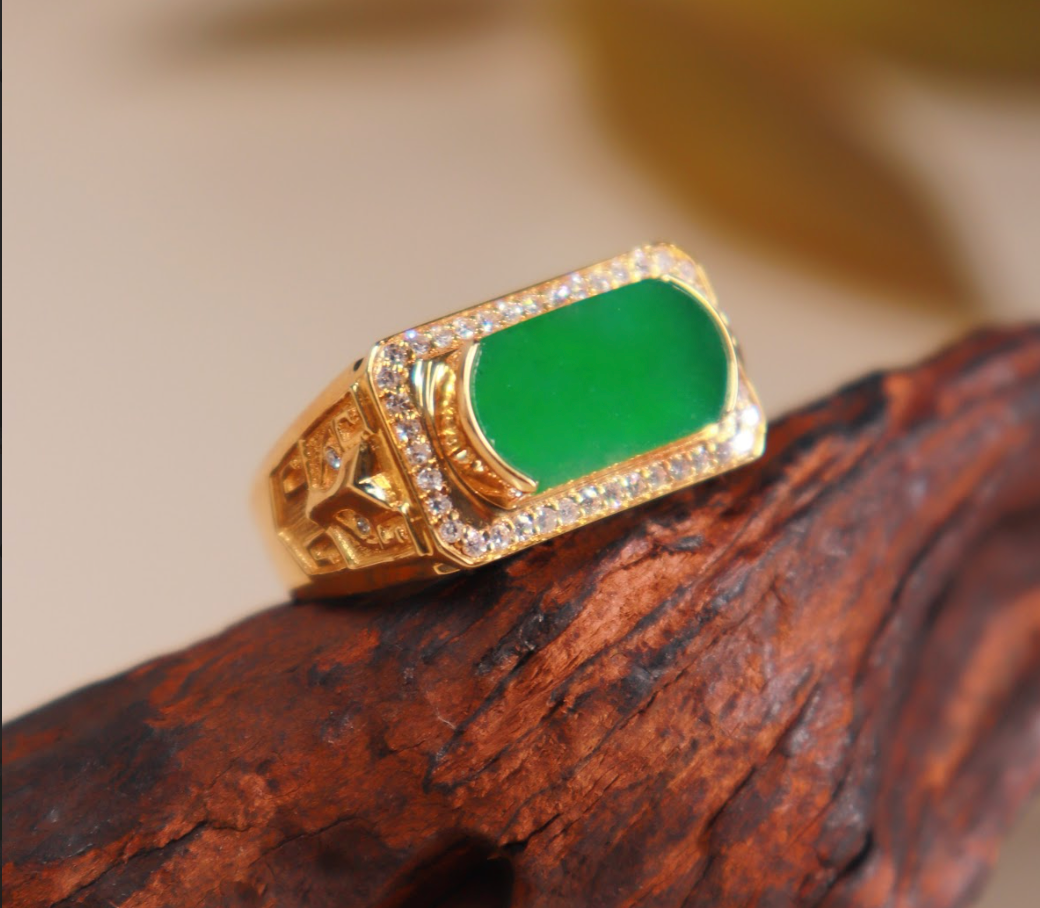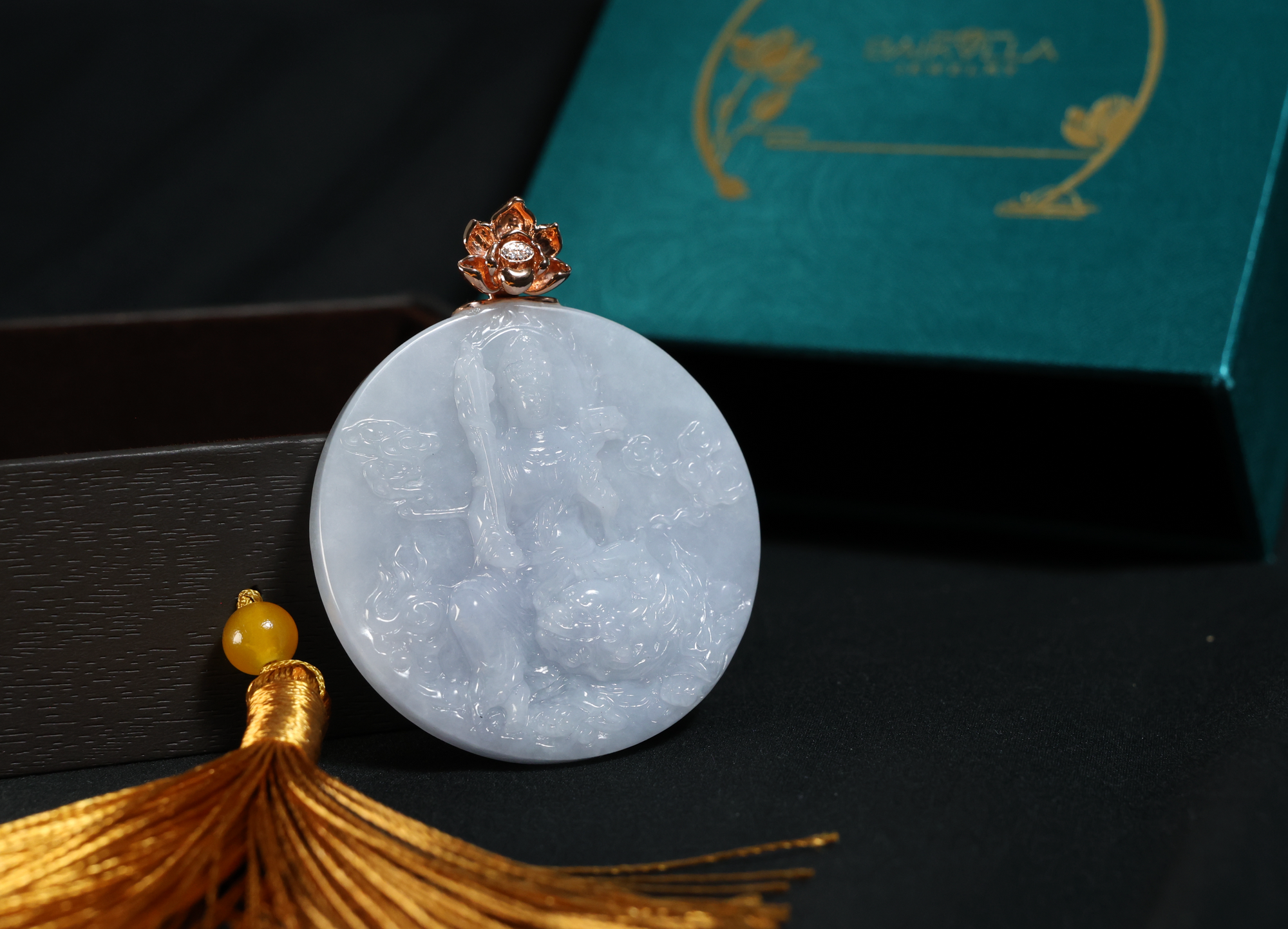Jade has been treasured across cultures for thousands of years—not only for its beauty, but also for its cultural and spiritual significance. However, not all jade is created equal. As demand grew, so did the development of techniques to alter jade’s appearance. Understanding jade treatments is essential for collectors, jewelry lovers, and anyone passionate about natural jade. Here's a look at the history and evolution of jade treatments.
Ancient Jade: Naturally Revered
In ancient China, jade (both nephrite and later jadeite) was highly valued for its toughness and purity. Artisans shaped jade into ceremonial objects, tools, and jewelry using labor-intensive techniques. Since there were no chemical treatments at the time, all jade used in ancient China was untreated—what we now call Type A jade.
Jadeite only began arriving in China around the late 1700s from Myanmar (formerly Burma), and quickly became popular among the elite for its intense green hues. At this point, there were still no chemical enhancements used—jadeite was simply carved and polished using natural abrasives.
The Rise of Chemical Treatments in the 20th Century
By the mid-20th century, rising demand and limited supply led to the emergence of chemical treatments designed to improve the color and clarity of lower-grade jadeite.
1. Bleaching and Polymer Impregnation (Type B Jade)
Developed in the 1980s, this process involves:
-
Soaking jadeite in strong acids (e.g., hydrochloric or sulfuric acid) to remove brown or dark iron stains.
-
Filling the now porous jade with clear polymers to restore luster and stability.
This process can drastically enhance the visual quality of jadeite but weakens its structure and makes it vulnerable to degradation over time. Under magnification or infrared spectroscopy, the presence of polymers can be detected (Wang et al., 1995).
2. Dyeing (Type C Jade)
Some jadeite is chemically dyed to imitate the vibrant greens of imperial jade or the lavender hues of rarer varieties. These dyes are unstable and can fade over time, especially with exposure to light or household chemicals.
3. Combined Treatments (Type B+C Jade)
This involves both acid bleaching, polymer impregnation, and dyeing. These are the most heavily treated jade pieces, often sold at deceptively low prices. Over time, they may lose their color, develop cracks, or become brittle.
4. Surface Coatings and Staining
Another common enhancement involves applying colored waxes, resins, or metallic stains to improve surface appearance. These methods are often used to deceive buyers and can be difficult to detect without proper testing.
How Are Jade Treatments Detected?
Experts use advanced gemological tools and methods to detect treatments:
-
Infrared spectroscopy can reveal the presence of polymers.
-
UV fluorescence, FTIR, and magnification help detect dyes or surface stains.
-
Reputable gemological labs like GIA (Gemological Institute of America) and NGTC (National Gemstone Testing Center, China) issue jade reports verifying authenticity and treatment status.
According to a GIA study, over 60% of jadeite sold in some Asian markets was found to be treated (Wang et al., 1995).
Why Does Treatment Matter?
Treated jade is often sold for significantly lower prices than natural jade. However, some sellers pass off treated jade as untreated to maximize profits, deceiving customers and inflating value.
-
Type A Jade: Natural, untreated, and considered the highest quality. Durable, collectible, and retains long-term value.
-
Type B/C Jade: Treated, less durable, prone to fading or cracking. Less valuable and should be priced accordingly.
Knowing the difference is crucial for anyone investing in jade jewelry or heirlooms.
Tips for Buyers
-
Buy from reputable sellers who disclose treatment status and offer certification.
-
Ask for lab reports from trusted gemological institutes like GIA or NGTC.
-
Be cautious of deals that seem too good to be true, especially with vivid green or lavender jade at suspiciously low prices.
Baikalla Jewelry's Commitment
At Baikalla Jewelry, we guarantee that every jade piece we sell is 100% natural, untreated Type A jade. Our jade is sourced directly from trusted cutters and suppliers, and we offer full transparency in our product descriptions and certification. We believe jade should be cherished for its natural beauty—not altered by artificial enhancements.
Sources:
-
Wang, W., Hall, M., & Scarratt, K. (1995). A Study of Bleached and Polymer-Impregnated Jadeite. GIA Gems & Gemology. Link
-
NGTC China. Jadeite Jade Treatment and Identification. National Gemstone Testing Center.
-
GIA. Jadeite Jade Quality Factors. GIA.edu




